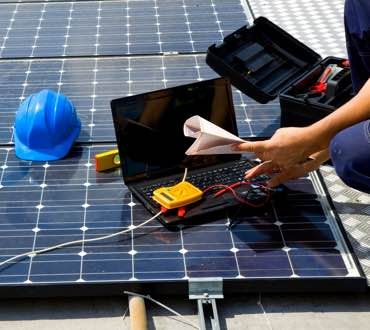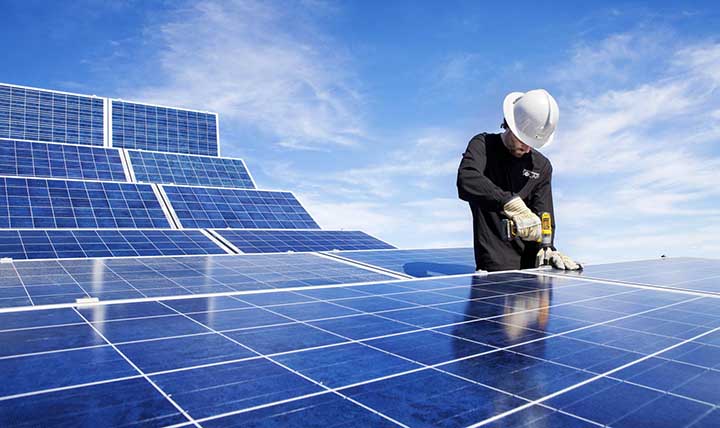
09 May Expert Solar Power Integration Strategies for Urban Kenya
Kenya’s urban centers are experiencing rapid growth, leading to increased energy demands and environmental concerns. Integrating solar power into these urban settings offers a sustainable solution to address these challenges. This article explores expert strategies for effectively incorporating solar energy into Kenya’s urban landscapes, focusing on innovative approaches, policy frameworks, and practical considerations.

Assessing Urban Energy Needs and Solar Potential
Understanding the specific energy requirements of urban areas is crucial for effective solar integration. Conducting comprehensive energy audits helps identify consumption patterns and peak demand periods. Additionally, assessing the solar potential of different urban locations enables the design of systems that maximize energy capture and efficiency.
Implementing Building-Integrated Photovoltaics (BIPV)
Building-Integrated Photovoltaics (BIPV) involve incorporating solar panels directly into building materials, such as roofs, facades, and windows. This approach not only generates electricity but also enhances the aesthetic appeal of urban structures. BIPV systems are particularly suitable for cities with limited space for traditional solar installations.
Utilizing Rooftop Solar Installations
Rooftop solar installations offer a practical solution for urban areas where ground space is scarce. By installing solar panels on residential, commercial, and industrial rooftops, cities can harness solar energy without the need for additional land. This strategy also reduces transmission losses by generating electricity close to the point of use.
Developing Solar-Powered Public Infrastructure
Integrating solar power into public infrastructure, such as street lighting, public transportation, and water pumping stations, enhances urban sustainability. Solar-powered streetlights, for example, improve public safety while reducing electricity costs and carbon emissions.
Encouraging Community Solar Projects
Community solar projects involve multiple stakeholders investing in a shared solar energy system. These projects enable urban residents who may not have suitable rooftops or financial capacity for individual installations to benefit from solar energy. Collaborative efforts also foster community engagement and awareness about renewable energy.
Navigating Regulatory and Policy Frameworks
A supportive regulatory environment is essential for the successful integration of solar power in urban areas. Policymakers should streamline permitting processes, offer incentives such as tax breaks or subsidies, and establish clear guidelines for grid connectivity. Engaging with local authorities and stakeholders ensures compliance and facilitates smoother project implementation.
Addressing Financial Considerations
The initial investment for solar installations can be a barrier for many urban dwellers. Exploring financing options like solar leasing, power purchase agreements (PPAs), and pay-as-you-go models can make solar energy more accessible. These financial mechanisms allow users to adopt solar power with minimal upfront costs, paying over time as they realize energy savings.
Embracing Technological Innovations
Advancements in solar technology, such as high-efficiency photovoltaic cells and energy storage solutions, enhance the viability of urban solar projects. Integrating smart grid technologies and Internet of Things (IoT) devices enables real-time monitoring and optimization of energy usage, improving overall system performance.
Promoting Public Awareness and Education
Educating urban populations about the benefits and practicalities of solar energy fosters acceptance and encourages adoption. Workshops, seminars, and demonstration projects can showcase successful implementations and address common misconceptions. Public awareness campaigns also highlight the environmental and economic advantages of transitioning to solar power.
Ensuring Maintenance and Sustainability
Regular maintenance is vital to ensure the longevity and efficiency of solar installations. Establishing service agreements with reputable providers and training local technicians creates a reliable support system. Additionally, considering the environmental impact of solar panel production and disposal promotes a holistic approach to sustainability.
Spenomatic’s Strategies
Spenomatic Solar Ltd has been at the forefront of integrating solar solutions into Kenya’s urban landscapes. Their approach encompasses several key strategies:
- Customized Urban Energy Assessments: Spenomatic conducts thorough energy evaluations tailored to the specific demands of urban environments. This ensures that solar installations are optimized for maximum efficiency and effectiveness.
- High-Quality Equipment with Robust Guarantees: Utilizing state-of-the-art equipment backed by strong warranties, Spenomatic ensures the longevity and reliability of urban solar installations. This commitment to quality builds trust and delivers lasting value to urban clients.
- Collaboration with Urban Industries: Partnering with major urban industrial players, such as Abyssinia Steel, Spenomatic has demonstrated the viability and benefits of large-scale solar integration in urban industrial operations. These collaborations serve as models for successful urban solar implementation.
Conclusion
Integrating solar power into urban Kenyan settings requires a multifaceted approach that combines technological innovation, supportive policies, financial mechanisms, and public engagement. By adopting these expert strategies, Kenya’s cities can harness solar energy to meet growing demands, reduce environmental impact, and pave the way for a sustainable urban future.
FAQs
1. What are Building-Integrated Photovoltaics (BIPV)?
BIPV refers to the integration of solar panels into building materials, allowing structures to generate electricity while maintaining aesthetic appeal.
2. How can rooftop solar installations benefit urban areas?
Rooftop solar installations utilize existing space to generate electricity, reducing the need for additional land and minimizing transmission losses.
3. What financial options are available for urban solar adoption?
Options such as solar leasing, power purchase agreements (PPAs), and pay-as-you-go models enable users to adopt solar energy with minimal upfront costs.
4. Why is public awareness important for solar integration?
Educating the public fosters acceptance, encourages adoption, and informs residents about the benefits and practicalities of solar energy.
5. What role does policy play in urban solar integration?
Supportive policies streamline permitting, offer incentives, and establish guidelines for grid connectivity, facilitating successful solar projects.


No Comments